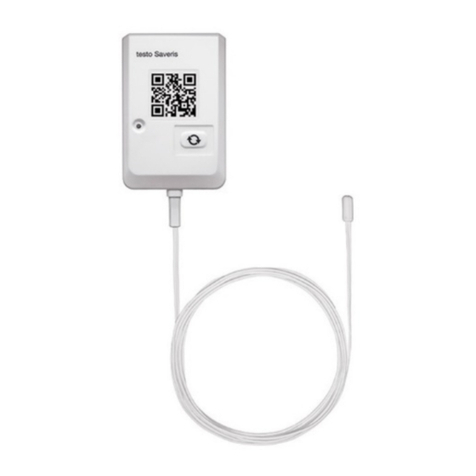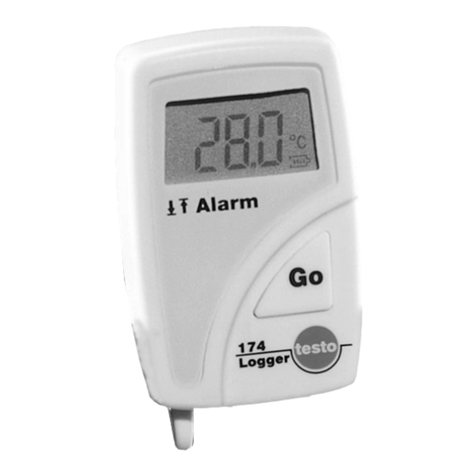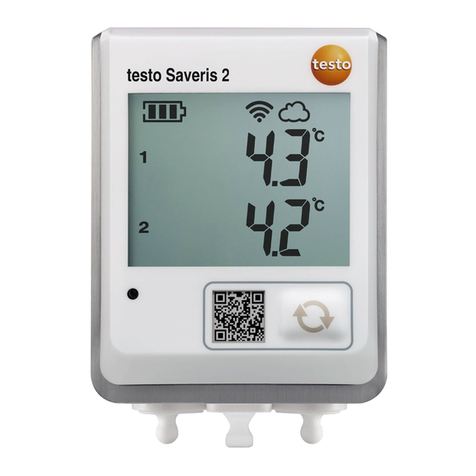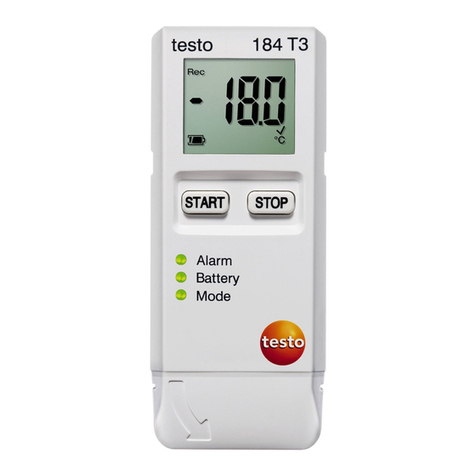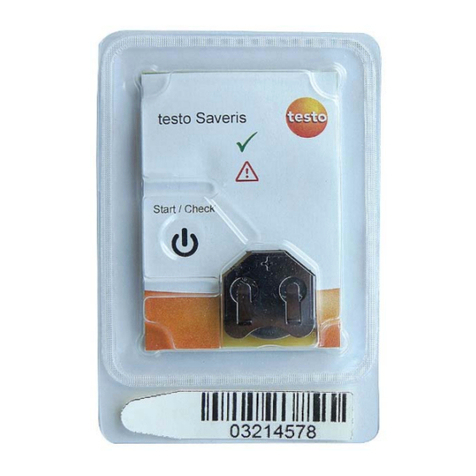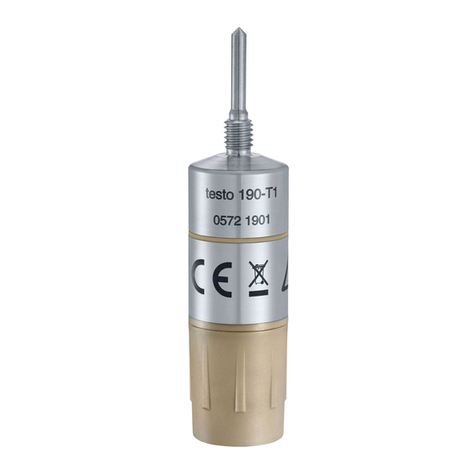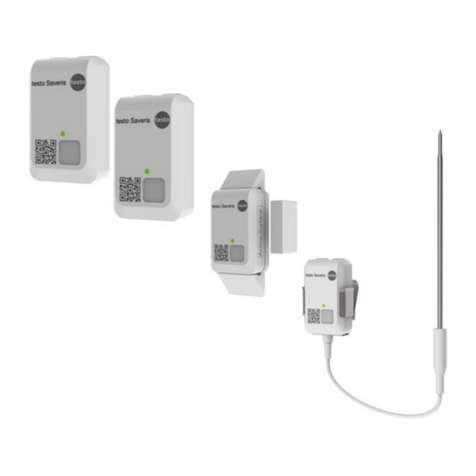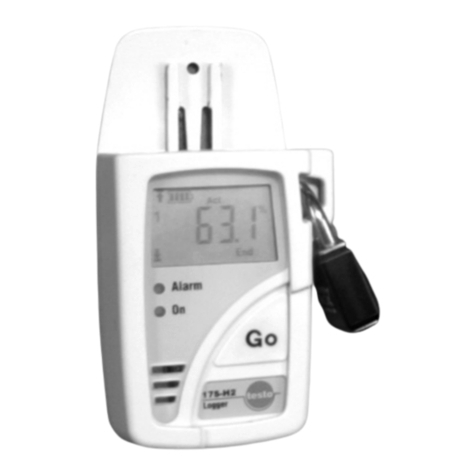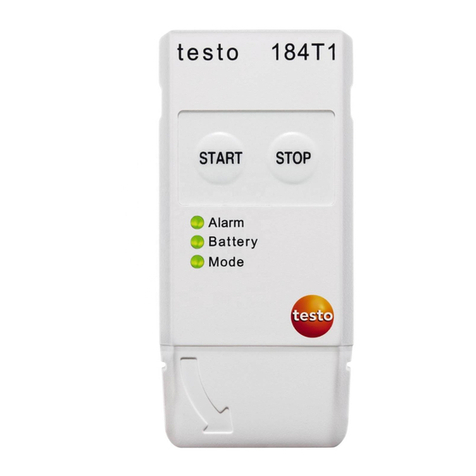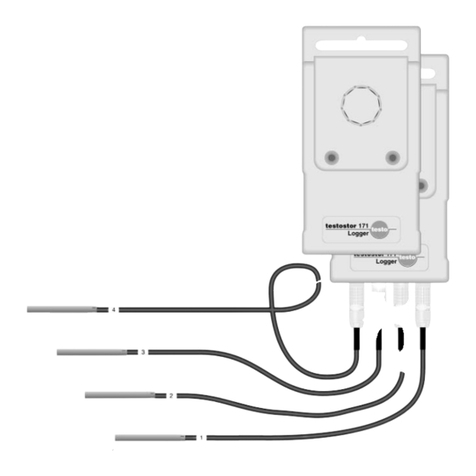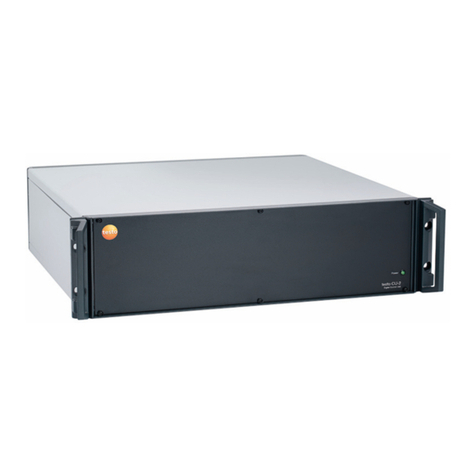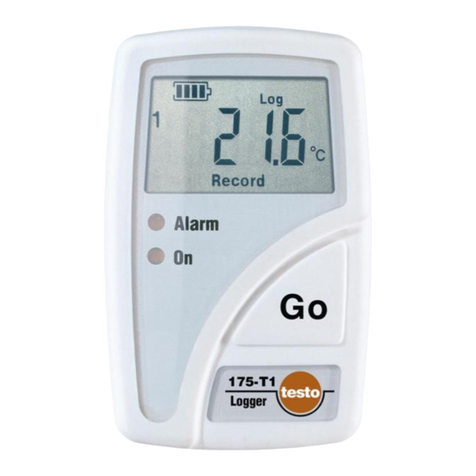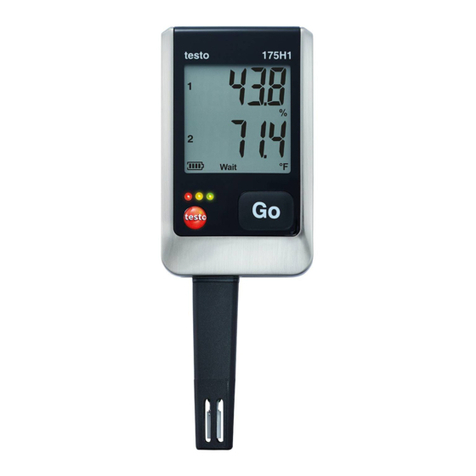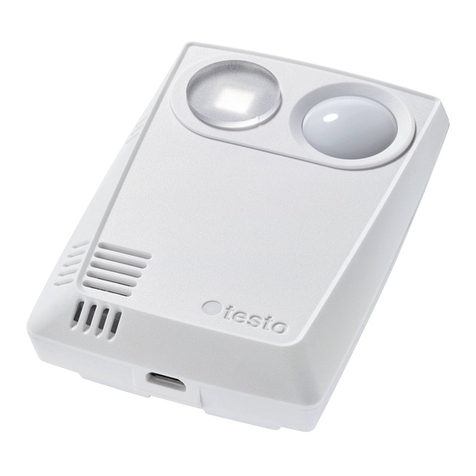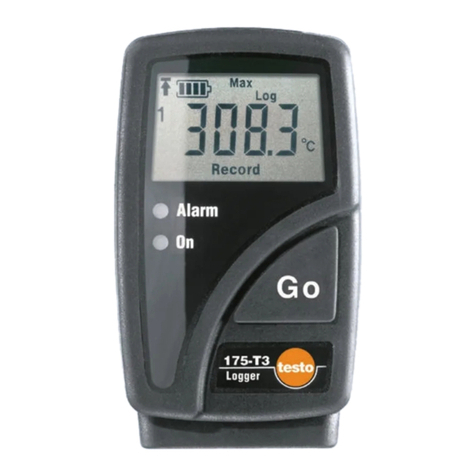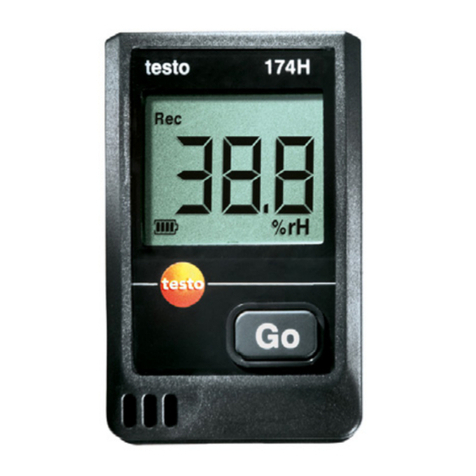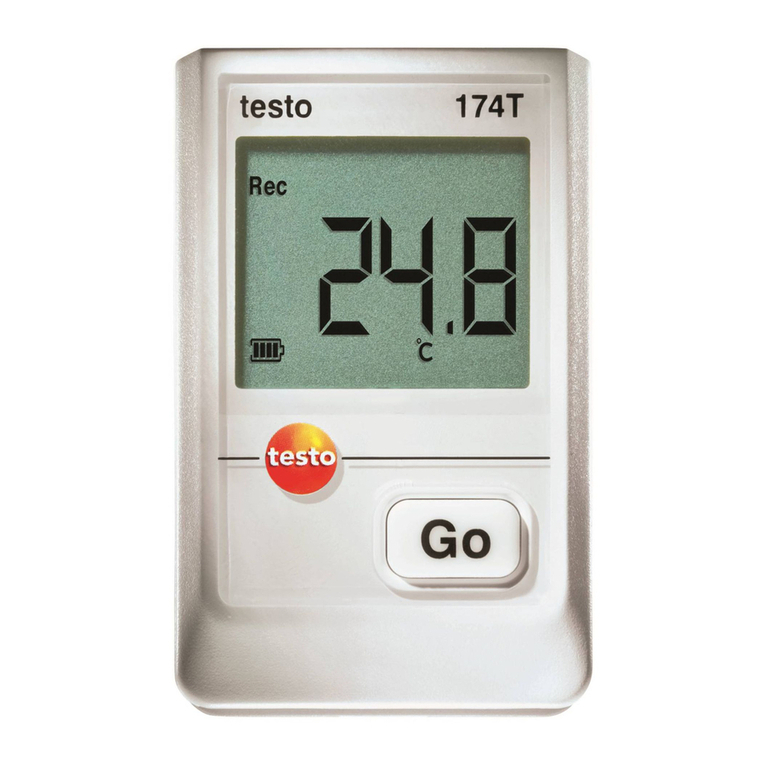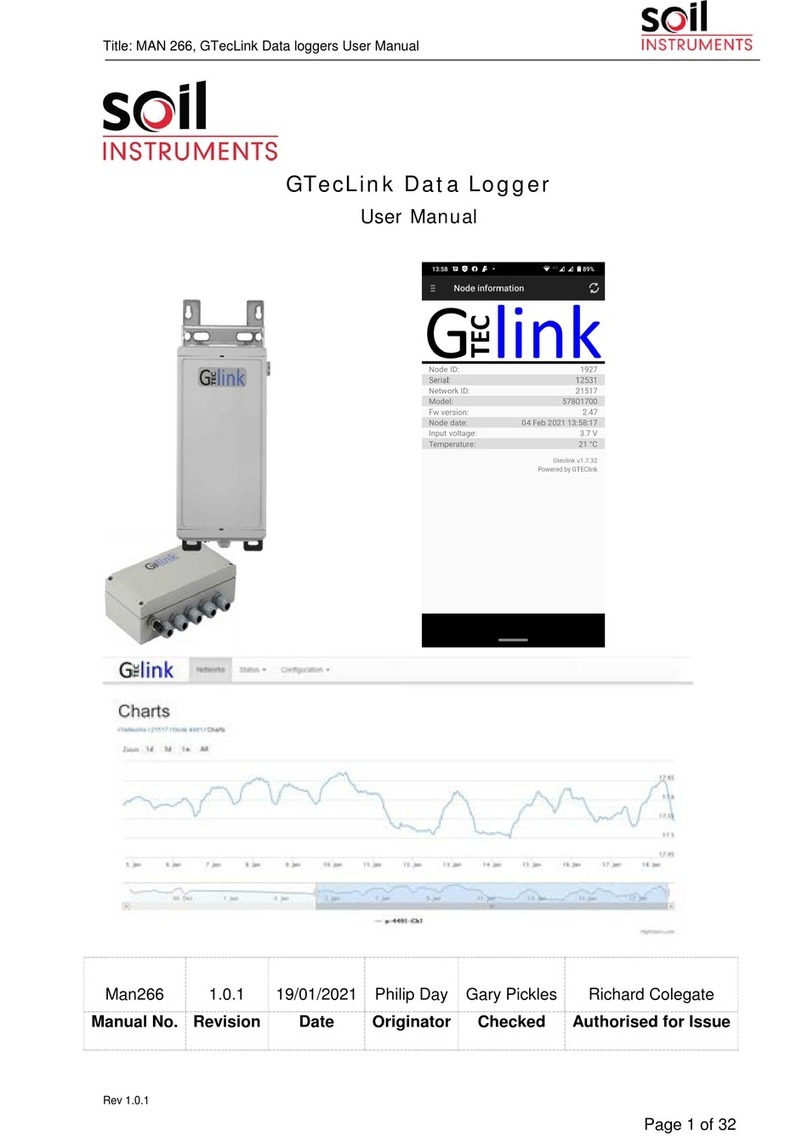Contents
1Applications. . . . . . . . . . . . . . . . . . . . . . . . . . . . . . . . . . . . . . . 3
2Description of instrument. . . . . . . . . . . . . . . . . . . . . . . . . . . . 4
3Warning . . . . . . . . . . . . . . . . . . . . . . . . . . . . . . . . . . . . . . . . . 5
4Keyboard layout . . . . . . . . . . . . . . . . . . . . . . . . . . . . . . . . . . . 6
4.1 Hot keys. . . . . . . . . . . . . . . . . . . . . . . . . . . . . . . . . . . . . . . . 7
5Menu overview. . . . . . . . . . . . . . . . . . . . . . . . . . . . . . . . . . . . . 8
6Introductory training
6.1 Measuring . . . . . . . . . . . . . . . . . . . . . . . . . . . . . . . . . . . . . 10
6.2 Printing the measured values on the infrared printer . . . . . 11
6.3 Saving measured values . . . . . . . . . . . . . . . . . . . . . . . . . . 11
6.4 Setting up a location . . . . . . . . . . . . . . . . . . . . . . . . . . . . . 12
7Operating instructions
7.1 Measuring . . . . . . . . . . . . . . . . . . . . . . . . . . . . . . . . . . . . . 14
8Main menu
8.1 Averaging. . . . . . . . . . . . . . . . . . . . . . . . . . . . . . . . . . . 15
8.2 Mean value configuration. . . . . . . . . . . . . . . . . . . . . . . 15
8.3 Memory
8.3.1 View . . . . . . . . . . . . . . . . . . . . . . . . . . . . . . . . . . . . . . . 16
8.3.2 State. . . . . . . . . . . . . . . . . . . . . . . . . . . . . . . . . . . . . . . 16
8.3.3 Programs 1 - 3
8.3.3.1 Starting criterium . . . . . . . . . . . . . . . . . . . . . . . . . . 18
8.3.3.2 Rate . . . . . . . . . . . . . . . . . . . . . . . . . . . . . . . . . . . . 20
8.3.3.3 Activating duration and program. . . . . . . . . . . . . . . 21
8.3.3.4 Overview of the programming system . . . . . . . . . . 22
8.3.4 Minimimum rate . . . . . . . . . . . . . . . . . . . . . . . . . . . . . . 22
8.3.5 Keylock. . . . . . . . . . . . . . . . . . . . . . . . . . . . . . . . . . . . . 23
8.3.6 Reset . . . . . . . . . . . . . . . . . . . . . . . . . . . . . . . . . . . . . . 23
8.4 Print . . . . . . . . . . . . . . . . . . . . . . . . . . . . . . . . . . . . . . . . 23
8.5 Location
8.5.1 Select . . . . . . . . . . . . . . . . . . . . . . . . . . . . . . . . . . . . . . 24
8.5.2 Enter. . . . . . . . . . . . . . . . . . . . . . . . . . . . . . . . . . . . . . . 24
8.5.3 Erase . . . . . . . . . . . . . . . . . . . . . . . . . . . . . . . . . . . . . . 24
8.6 Device
8.6.1 Display . . . . . . . . . . . . . . . . . . . . . . . . . . . . . . . . . . . . . 24
8.6.2 Date/Time. . . . . . . . . . . . . . . . . . . . . . . . . . . . . . . . . . . 25
8.6.3 Rechargeable battery. . . . . . . . . . . . . . . . . . . . . . . . . . 25
8.6.3.1 Notes on battery operation. . . . . . . . . . . . . . . . . . . . . . 25
8.6.3.2 Examples for rechargeable battery lifetime . . . . . . . . . 25
8.6.4 Auto-Off . . . . . . . . . . . . . . . . . . . . . . . . . . . . . . . . . . . . 26
8.6.5 Intermediate rate . . . . . . . . . . . . . . . . . . . . . . . . . . . . . 26
8.6.6 Alarm . . . . . . . . . . . . . . . . . . . . . . . . . . . . . . . . . . . . . . 27
8.6.7 Units. . . . . . . . . . . . . . . . . . . . . . . . . . . . . . . . . . . . . . . 28
8.7 Probes
8.7.1 Unit. . . . . . . . . . . . . . . . . . . . . . . . . . . . . . . . . . . . . . . . 29
8.7.2 Scaling . . . . . . . . . . . . . . . . . . . . . . . . . . . . . . . . . . . . . 29
8.7.3 Calibrate. . . . . . . . . . . . . . . . . . . . . . . . . . . . . . . . . . . . 29
8.7.4 Adjust . . . . . . . . . . . . . . . . . . . . . . . . . . . . . . . . . . . . . . 30
8.7.5 Discard. . . . . . . . . . . . . . . . . . . . . . . . . . . . . . . . . . . . . 30
8.8 Specials
8.8.1 Display . . . . . . . . . . . . . . . . . . . . . . . . . . . . . . . . . . . . . 31
8.8.2 Flow volume. . . . . . . . . . . . . . . . . . . . . . . . . . . . . . . . . 31
8.8.3 Density . . . . . . . . . . . . . . . . . . . . . . . . . . . . . . . . . . . . . 31
8.8.4 Pressure. . . . . . . . . . . . . . . . . . . . . . . . . . . . . . . . . . . . 31
2


